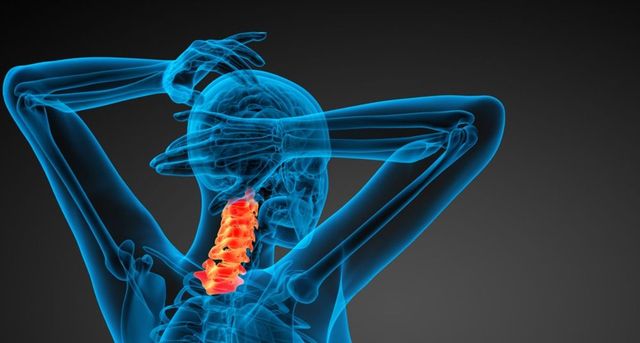Everything About Spinal Decompression: Effective Solutions for Spinal Health and Wellness
Spinal decompression treatment has actually arised as a viable choice for those looking for remedy for numerous spinal concerns. This non-invasive therapy targets the source of pain, such as herniated discs and chronic pain in the back. Understanding its concepts and applications can shed light on exactly how it promotes total spinal wellness. What are the certain benefits and techniques entailed in spinal decompression? Checking out these questions may disclose important insights for individuals considering this technique.
Recognizing Spinal Decompression Treatment
Exactly what is spinal decompression treatment, and exactly how does it operate? Spinal decompression treatment is a non-invasive therapy targeted at easing stress on the spine's discs and nerves. It uses specialized tools to carefully stretch the spine, creating adverse pressure within the discs. This adverse pressure helps with the repositioning of herniated or bulging discs and urges the influx of crucial nutrients and liquids into the influenced locations.
Patients typically lie on a mechanized table that supports the spine while permitting controlled grip. The treatment can target different spinal conditions, including persistent back disc, sciatica, and discomfort degeneration. Sessions are usually painless and can last from 30 to 45 mins. While many patients experience instant alleviation, a collection of sessions might be advised for finest outcomes. On the whole, spinal decompression treatment represents an all natural technique to spinal health and wellness, intending to restore function and promote general well-being.
The Science Behind Spinal Decompression
Spinal decompression treatment is based in principles of biomechanics and physical action to pressure changes within the spinal column. This non-invasive therapy intends to reduce spinal disc stress, which can add to pain and discomfort. By employing grip techniques, spinal decompression creates a negative stress setting within the intervertebral discs. This negative pressure facilitates the repositioning of herniated or protruding discs and advertises the increase of vital nutrients and liquids, assisting in the recovery process.
Study suggests that spinal decompression can result in a boost in disc elevation, which may reduce nerve origin compression. Top Chiropractor. The therapy also aims to enhance spinal alignment, possibly improving general biomechanical function. Understanding these clinical concepts assists practitioners use spinal decompression efficiently, guaranteeing that people obtain targeted care tailored to their details spinal conditions. On the whole, the science behind spinal decompression underscores its importance in the area of spinal health
Benefits of Spinal Decompression
While lots of people look for relief from persistent pain in the back, the advantages of spinal decompression expand beyond simple pain monitoring. This healing approach help in enhancing spinal health by advertising correct positioning and decreasing pressure on intervertebral discs. Enhanced flow is an additional significant benefit, as spinal decompression promotes far better blood circulation to the spine, nourishing surrounding cells and increasing recovery procedures.
In addition, spinal decompression can cause raised flexibility and boosted variety of movement, allowing individuals to participate in everyday tasks with better simplicity. Numerous individuals report enhanced total well-being and a decrease in tension degrees, as relieving neck and back pain can considerably boost lifestyle.
Furthermore, spinal decompression might work as a preventative procedure, helping to avert future spinal concerns by preserving optimal spinal feature. In general, the complex benefits of spinal decompression emphasize its significance in promoting long-term spinal health and wellness and health.
Kinds Of Spinal Decompression Strategies
Numerous strategies exist for spinal decompression, each designed to ease stress on the spine and boost general health. One common technique is mechanical spinal decompression, which uses a traction table to gently stretch the spine, creating negative stress in the discs. An additional strategy is manual spinal decompression, carried out by a chiropractic practitioner, who applies controlled pressure to eliminate and straighten the spine tension.
On top of that, there are non-invasive therapies such as inversion treatment, where individuals hang inverted to promote spinal elongation. Furthermore, workouts that concentrate on reinforcing core muscle mass can contribute to spinal support and decompression.
Finally, some specialists make use of advanced methods like spinal decompression devices, which are engineered to supply targeted relief. Each strategy intends to improve spinal alignment, minimize discomfort, and improve flexibility, catering to the unique demands of individuals seeking relief from spinal discomfort.
What to Anticipate Throughout a Spinal Decompression Session
Throughout a spinal decompression session, people can anticipate a series of preparation steps developed to assure their convenience and safety and security. The session itself commonly includes a mix of therapeutic strategies targeted at easing pressure on the spine. Recognizing these aspects can help individuals feel extra comfortable prior to and throughout the therapy.
Therapy Preparation Steps
As patients plan for a spinal decompression session, they can expect a meticulously structured procedure developed to ensure their convenience and safety and security. Professionals will certainly perform an extensive Going Here evaluation, evaluating medical background and existing signs to tailor the treatment. People might be suggested to put on comfortable garments and eliminate any kind of precious jewelry that might hinder the procedure. It's likewise usual for clinicians to discuss the innovation and techniques made use of in spinal decompression, making sure clients recognize the process and its benefits. In addition, people might be advised to moisturize properly before the session. This preparation intends to produce a positive atmosphere for spinal health, permitting patients to feel protected and notified concerning their treatment journey.
Session Experience Summary
A spinal decompression session usually unravels in a calm and regulated setting, where clients are located comfortably on a specialized table made for the treatment. The professional starts by clarifying the process, making certain the person understands each step. Once worked out, mild grip is put on the spine, creating space between the vertebrae to ease pressure on the discs and nerves. Individuals might feel a moderate stretching sensation, however discomfort ought to be minimal. Sessions typically last about 30 to 45 mins, during which the specialist checks the patient's action. Later, clients may receive suggestions for follow-up care or exercises to enhance results. Generally, the experience intends to promote relaxation and healing, fostering a feeling of wellness.
That Can Gain From Spinal Decompression?
Who stands to acquire one of the most from spinal decompression therapy? Individuals experiencing chronic neck and back pain, herniated discs, or degenerative disc condition are primary candidates for this therapy. Those experiencing sciatica or feeling numb in the arm or legs may additionally benefit significantly, as spinal decompression can aid ease pressure on the spinal nerves. Furthermore, athletes recouping from injuries or people with postural problems often discover relief with this therapy.
Moreover, individuals looking for a non-invasive alternative to surgical procedure for their spinal health and wellness concerns might take into consideration spinal decompression as a feasible choice. It is necessary for prospective candidates to speak with medical you can find out more care specialists to figure out the appropriateness of this therapy for their details problems. In general, spinal decompression therapy can provide substantial advantages for a varied series of individuals, improving their total quality of life and promoting much better spinal health.
Tips for Preserving Spinal Health After Therapy
After going through spinal decompression therapy, keeping spinal health is important for lasting health. Carrying out routine workout routines, being conscious of pose, and establishing an ergonomic work area can greatly add to a much healthier spine. These practices not only sustain recovery yet also help prevent future concerns.

Routine Exercise Routines
Preserving spinal wellness adhering to therapy is necessary for long-term recuperation and general well-being. Routine workout routines play an important function in this procedure. Participating in low-impact tasks such as swimming, strolling, and biking can assist enhance the muscular tissues supporting the spine, improve flexibility, and enhance general flexibility. Integrating core-strengthening workouts is specifically useful, as they give stability and assistance to the spinal column. In addition, mild stretching regimens can relieve stress and promote leisure in the back muscles. It is necessary to get in touch with a health care expert before beginning any brand-new exercise regimen to ensure it straightens with private recuperation objectives. Uniformity in these activities cultivates a positive approach to spinal health and wellness, helping in the avoidance of future problems.
Position Recognition Strategies
A strong recognition of pose can significantly influence spinal wellness throughout the recuperation process. Individuals must consciously preserve an upright setting, guaranteeing that the head is straightened with the spine and shoulders are relaxed. Consistently inspecting in with one's position throughout the day can assist reinforce good behaviors. When sitting, using more info here a helpful chair that advertises back assistance is vital. Furthermore, standing for long term periods needs weight circulation in between both feet and involving the core muscular tissues. Practicing gentle stretches and flexibility workouts can likewise enhance awareness of position. Mindfulness techniques, such as deep breathing, can help in recognizing stress and promoting leisure in the back. Executing these methods promotes an aggressive strategy to spinal wellness post-treatment.
Ergonomic Work Space Configuration
While an ergonomic work area might seem like a luxury, it is important for those recouping from spinal concerns. A well-structured environment can considerably aid in keeping spinal health and wellness. Crucial element consist of a chair with back assistance, which urges correct position, and a workdesk height that enables elbows to relax at a 90-degree angle. Furthermore, computer system screens need to be at eye level to decrease neck stress. Normal breaks to stand and stretch are vital, as prolonged sitting can exacerbate pain. Footrests can additionally enhance blood circulation and minimize stress on the reduced back. By focusing on these ergonomic concepts, individuals can create a supportive work area that cultivates healing and advertises long-term spinal wellness, ultimately enhancing total efficiency and convenience.
Often Asked Inquiries
For How Long Does Spinal Decompression Therapy Generally Require To Show Results?
Spinal decompression treatment commonly takes numerous weeks to reveal visible outcomes. Most patients experience enhancement within 4 to 6 weeks, relying on private problems and adherence to the recommended treatment strategy laid out by healthcare experts.
Are There Any Kind Of Side Results Connected With Spinal Decompression Therapy?
Spinal decompression treatment might trigger mild negative effects, such as temporary pain, muscle mass spasms, or discomfort after therapy. These signs and symptoms are usually brief and deal with rapidly, allowing clients to continue their treatment efficiently.
Can Spinal Decompression Treatment Be Done in your home?


Is Spinal Decompression Safe for Expectant Women?
Spinal decompression is typically thought about harmful for pregnant females due to potential dangers. It is vital for expectant mommies to get in touch with medical care experts prior to undergoing any type of spinal treatments to guarantee the security of both mother and baby.
Exactly how Frequently Should I Go Through Spinal Decompression Therapy for Finest Results?
Commonly, people ought to go through spinal decompression treatment 2 to 3 times a week for ideal results. Nevertheless, the regularity may differ based upon individual problems and must be established by a healthcare expert.
Spinal decompression treatment is based in principles of biomechanics and physical action to pressure changes within the spinal column. Comprehending these clinical principles helps specialists apply spinal decompression successfully, guaranteeing that patients obtain targeted care customized to their details spinal conditions. Spinal decompression may serve as a preventive step, aiding to prevent future spinal concerns by keeping ideal spinal feature. Individuals seeking a non-invasive choice to surgical treatment for their spinal wellness issues may take into consideration spinal decompression as a practical alternative. After going through spinal decompression treatment, preserving spinal health is necessary for long-lasting well-being.